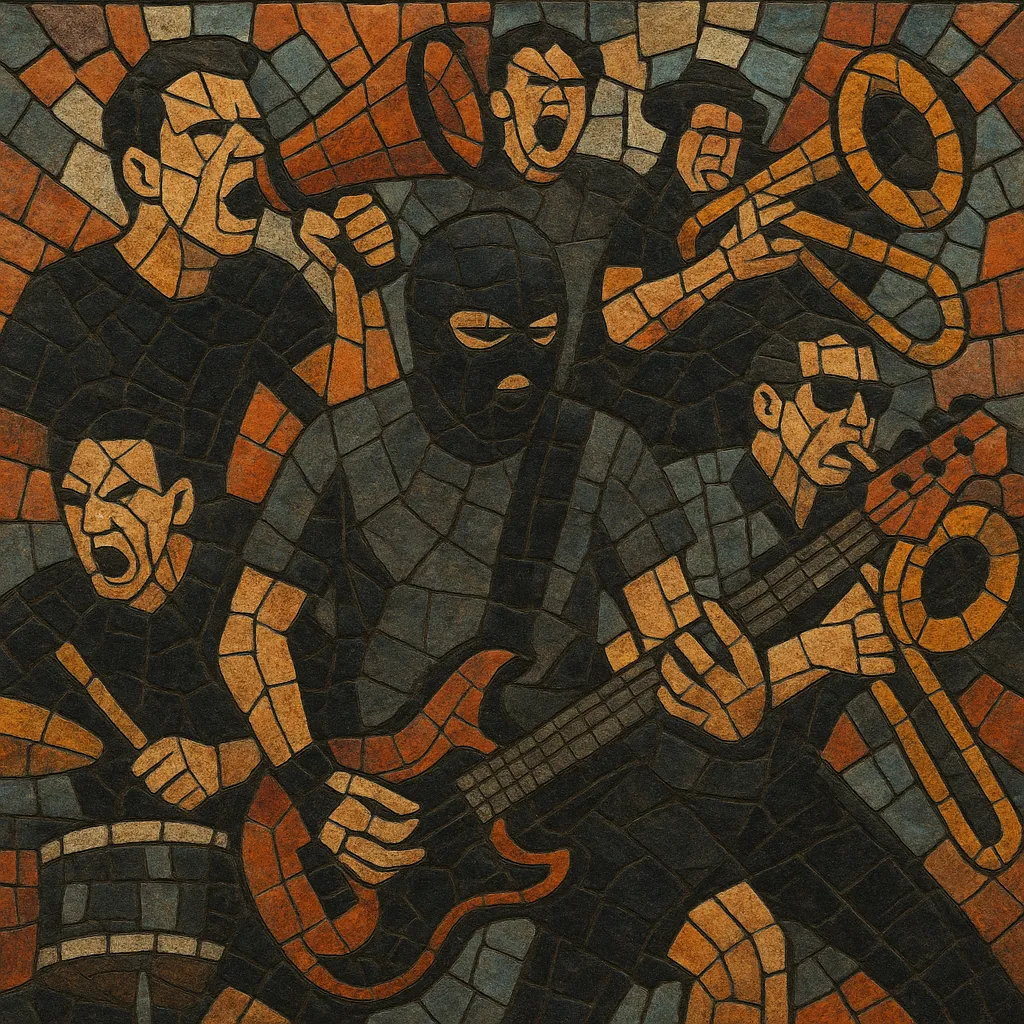Skacore is a fusion of ska and hardcore punk that welds off‑beat ska rhythms and brass stabs to the speed, aggression, and shouted vocals of hardcore.
It typically features guitar upstrokes on the off‑beats, fast two‑step/d‑beat drum patterns, energetic horn lines, and sudden switches between skanking grooves and mosh‑worthy breakdowns.
Compared with ska punk, skacore is generally heavier, faster, more abrasive, and more politically charged, drawing on hardcore’s DIY ethos and confrontational stage energy.
Skacore coalesced in the United States in the late 1980s as punk bands began integrating first‑wave ska upstrokes and Jamaican rhythmic sensibilities into hardcore’s velocity and grit. Bay Area pioneers like Operation Ivy demonstrated how off‑beat guitar, walking/reggae‑tinged bass, and two‑step drums could sit comfortably inside hardcore song structures and tempos.
The term "ska‑core" was popularized in 1993 by The Mighty Mighty Bosstones’ EP "Ska‑Core, The Devil and More," even as the band straddled ska punk and hardcore. Through the early–mid 1990s, scenes in Boston, Southern California, the Midwest, and the East Coast nurtured a heavier take on ska, with groups like Voodoo Glow Skulls, The Suicide Machines, and Against All Authority bringing hardcore speed, barked vocals, and punchy horn arrangements to third‑wave ska audiences.
By the late 1990s, some bands pushed skacore into crust/anarcho territory—New York’s Choking Victim and Leftöver Crack fused d‑beat, crust punk, and dub interludes into what became known as crack rock steady. In the UK, acts such as Capdown and later Random Hand blended ska rhythms with UK hardcore and punk, helping European scenes adopt the style’s intensity.
Though mainstream interest in third‑wave ska waned, skacore persisted in DIY spaces worldwide. Its mix of off‑beat propulsion and hardcore impact continues to shape politically minded punk bills, inspire horn‑backed pit anthems, and feed hybrid styles that toggle between ska skank and hardcore breakdowns.
Use a classic punk rhythm section (electric guitar, bass, drums) augmented by a horn section (typically trumpet, trombone, and/or sax). Keep guitar tones crunchy but articulate so off‑beat upstrokes remain clear, and arrange horns for tight unison riffs, rhythmic stabs, and short countermelodies.
Build grooves around ska’s off‑beat (the guitar skank on beats 2 and 4) and alternate with hardcore’s two‑step/d‑beat at fast tempos (often 170–210 BPM). Employ quick transitions between skanking verses and explosive mosh parts, occasionally adding halftime breakdowns or brief dub/reggae drop‑downs for contrast.
Favor power‑chord progressions (I–bVII–IV, i–VI–VII, etc.) with occasional minor keys to heighten intensity. Write horn lines that double guitar riffs for weight, answer the vocal with call‑and‑response figures, or punch accents on syncopated hits. Keep melodies bold and rhythmic rather than ornate.
Use shouted or barked lead vocals with gang‑chant responses. Lyrical themes often include social critique, anti‑authoritarian politics, and scene solidarity; keep phrasing percussive to ride the groove. Hooks should be short and memorable to cut through dense arrangements.
Structure songs with tight, high‑energy sections: intro hit, skank verse, pre‑chorus lift, shout‑along chorus, and a hardcore breakdown or horn‑driven bridge. Arrange dynamics so horns and rhythm section trade spotlight—leave space for horn stabs during vocal lines and feature short instrumental hits before drops.
Aim for punchy drums, present bass, and crisp rhythm guitar so the off‑beat skank is audible. Horns should be bright but not harsh. Live, emphasize tight stops, synchronized hits, and energetic crowd interaction (call‑and‑response, circle pits) to embody the genre’s cathartic release.


